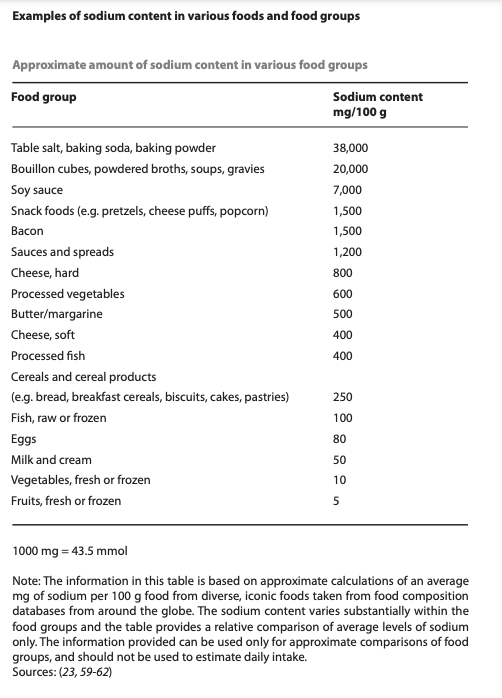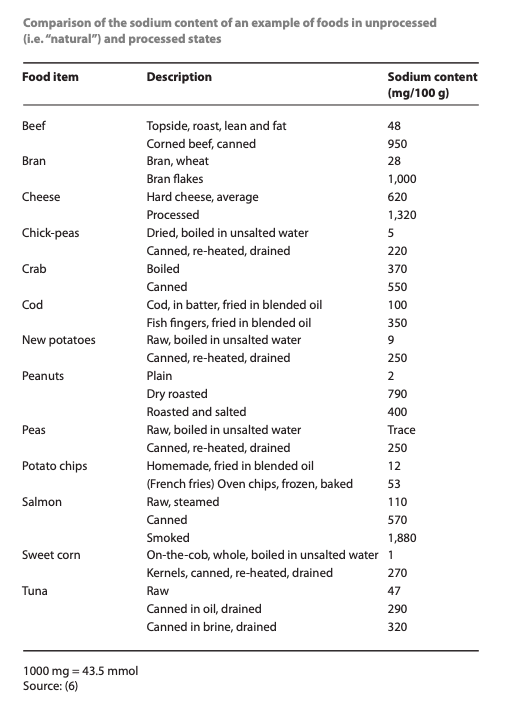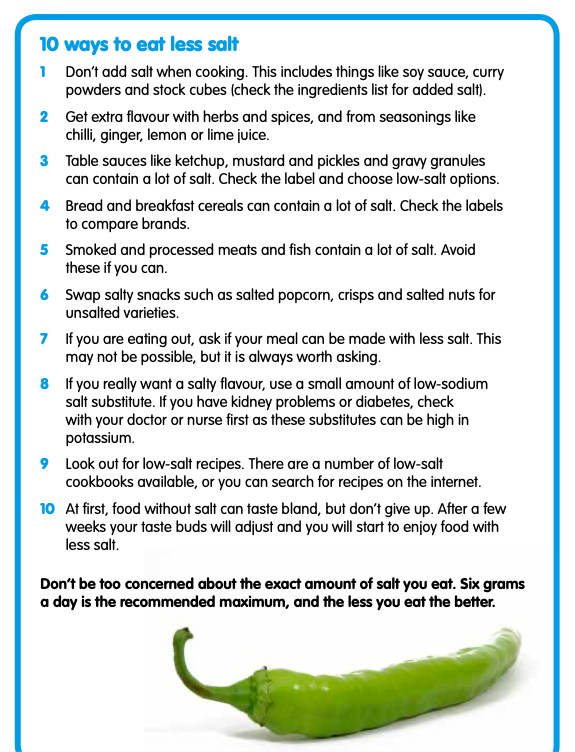Hope you enjoyed reading our previous blog “3 Highs is not a death sentence” which I’ve teamed up with my cousin Dr Wu. This week we will focus one of the 3 highs: Hypertension. Dr Wu had explained Hypertension- the silent killer very well in her blog so I’ll jump right into the nutrition and lifestyle here.
Food is medicine. Diet plays an important role.
Apart from cutting down on foods high in sodium 鈉 (Na) as many of you already know, it’s important to increase intake of foods high in potassium 鉀 (K), calcium 鈣 (Ca) and magnesium 鎂 (Mg), as they help regulate blood pressure. In short, an eating plan for hypertension should be as such:
- Eating vegetables, fruits, and whole grains ?
- Including fat-free or low-fat dairy products, fish, poultry, beans, nuts, and vegetable oils?
- Limiting foods that are high in saturated fat, such as fatty meats, full-fat dairy products, and tropical oils such as coconut, palm kernel, and palm oils ?
- Limiting sugar-sweetened beverages and sweets.?
This eating plan is called DASH Eating Plan , which stands for Dietary Approaches to Stop Hypertension. If you want to learn more about it or willing to start making lifestyle changes,? I am here to help you. Here’s my contact .?
Why do we need to increase K, Ca, Mg and decrease Na?
Potassium 鉀 (K):
Normal body levels of potassium are important for muscle function. Potassium relaxes the walls of the blood vessels, lowering blood pressure and protecting against muscle cramping.
* Low potassium intake –> increased blood pressure –> higher risk of stroke.
* High potassium intake –> lower the systolic (top number) blood pressure.
Source: Harvard Medical School
| Fruits | Bananas, cantaloupe, honeydew, oranges, grapefruit, kiwi. Dried fruits: Prunes, dates, raisins |
| Vegetables | Broccoli, water chestnuts, spinach, mushrooms, beets and other green leafy vegetables |
| Carb | Butternut squash, sweet potatoes, potatoes, peas, beans |
Calcium鈣 (Ca):
Calcium is important for healthy blood pressure because it helps blood vessels tighten and relax when they need to. Source: Harvard Medical School
| Dairy | Milk, cheese (choose low fat dairy products) |
| Protein | Fish with edible bones such as canned sardines |
| Vegetables | Dark green leafy vegetables such as broccoli, kale, spinach, okra, Kai Lan |
| Fruits | Oranges, dried figs |
| Soy | Soy drinks with added calcium, soybean, tofu |
- Note: It’s advised to get the calcium from food rather than from supplement pills. If it’s not possible to get enough calcium from food, talk with your doctor if you think you may need a calcium supplement.
Magnesium 鎂 (Mg):
Magnesium helps regulate hundreds of body systems, including blood pressure, blood sugar, and muscle and nerve function. We need magnesium to help blood vessels relax, and for energy production, and bone development. Source: Harvard Medical School
| Vegetables | Dark green leafy vegetables such as spinach |
| Carb | Unrefined grains, whole wheat and legumes, black beans |
| Nuts and seeds | Almonds, cashews, peanuts, pumpkin seeds, quinoa |
| Soy | Edamame, tofu |
Sodium鈉 (Na):
This article How Salt Can Impact Your Blood Pressure, Heart and Kidneys by Cleveland Clinic explains the impact of salt on heart and kidney beautifully, “when you think about blood pressure, your kidneys may not come to mind”.
Eating too much salt –> make it harder for your kidneys to remove fluids –> builds up in your system –> increases your blood pressure.
Overtime –> the blood vessels got narrowed and stiffened –> put an incredible strain on the heart –> heart failure.
Unchecked hypertension –> damage the artery walls –> begins to collect fat –> lead to heart disease and potentially heart attack or stroke.
Source: Cleveland Clinic
How to reduce sodium intake?
WHO Recommendation for adults: Less than 2 gram of sodium per day sodium (ie. 5 gram of salt a day, ~ one teaspoon of table salt)
Goal: To reduce blood pressure and risk of cardiovascular disease, stroke and coronary heart disease in adults.
Let’s translate that into practice:
- Salt is sodium chloride; 40% sodium and 60% chloride.
- One gram of sodium = 2.5 grams of salt.
- One teaspoon table salt = 5.69 g in weight = 2300 mg of sodium.
- That means we should eat less than one teaspoon of table salt per day to meet our recommendation. I’m sure you are not having one teaspoon of table salt per day. But it’s everywhere – hidden in the food.
- Online conversion resource: Weights and Measurement ; a helpful tool to convert US and metric.
Sodium is everywhere!

Let’s take gravies as an example, a small ladle on roast beef would be around 50 gram, two ladles would be 100 gram which already met our one day allowance for sodium!
Rule of thumb: Go easy on gravies, sauces.
Eat less processed foods.

From the table above, you can see there’s a huge difference between foods at natural states and foods at processed states.
Rule of thumb: Read the label to check out how much sodium the food contains and pick the one with less sodium. If the label doesn’t say, look at the ingredients list.
Ten ways to eat less salt:

What else can we do?
1. Follow up regularly with your doctor and if medication is prescribed, take it! Medications do not just bring down the blood pressure numbers, the newer classes of anti-hypertensives can specifically protect the kidneys and heart! Sometimes, doctors use these medications on patients who do not have hypertension, just for the sole purpose of protecting the heart and kidneys. Work with your doctor to find the best medication for you.
2. Be physically active (at least 30 minutes a day)
3. Stop smoking. ?
4. Manage and cope with stress.
5. Get plenty of sleep.
6. If you drink, limit alcohol to 2 drinks or less in a day for men and 1 drink or less in day for women, according to CDC and NHS. ? A good way to help achieve this is to have several drink-free days each week.
7. People at high risk of or with cardiovascular disease who are overweight or obese, seek advice and support to work towards achieving and maintaining a healthy weight.
8. Don’t be overwhelmed with the information given. If you want to learn more about it or willing to start making lifestyle changes,? I am here to help you. Feel free to contact me for 1:1 consultation or group sessions.
| Elevated blood pressure | Stage 1 hypertension | Stage 2 hypertension | |
| BP readings | Before it gets to hypertension | When the blood pressure is higher than 130/80 | When the blood pressure is over 140/90 |
| Treatment | Therapeutic lifestyle changes (TLC) | TLC | TLC + medications |
| Goal | To prevent disease progression | To prevent disease progression | To control BP To protect internal organs such as heart, brain and kidneys. To prevent complications of hypertension! |
| Complications | As it is asymptomatic and quietly damaging your body, we call it the silent killer. “Unfortunately, once you have symptoms, it is already too late. It is the complications of hypertension that led to symptoms: chest pain from a heart attack, inability to move one side of the body from stroke, swelling and inability to breathe because of heart or kidney failure.” |
About the authors:
I’ve teamed up with my cousin, Dr Wu, to share useful tips on nutrition and health. She is a retired physician while I am a Registered Dietitian Nutritionist, so hopefully we can help our readers achieve a healthier life. We hope that you will be interested in learning more about nutrition and health, and have the incentive to further improve your lifestyle by subscribing to our blogs, follow us on Instagram and Facebook. Do not hesitate to ask questions! Don’t forget to visit my cousin Dr Wu’s blog for other interesting posts.

